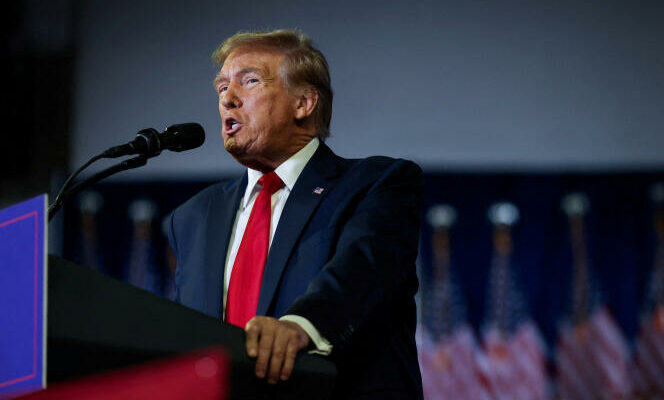“You haven’t paid?” Are you bad payers? (…) No, I wouldn’t protect you. In fact, I would encourage [les Russes] to do as they please. » This statement by Donald Trump during an electoral rally in South Carolina, Saturday February 10, aroused strong reactions, because it calls into question the principle of solidarity between the member states of the Treaty Organization. North Atlantic (NATO).
This charge by the candidate in the Republican primary against American allies is not new: during his presidency (2017-2021), Donald Trump already criticized a supposed imbalance between the allies on the financing of the Atlantic Alliance. But speaking for years about “bad payers” and of ” country [qui] owe us a huge pile of money for years”the former president maintains confusion.
Indeed, there is no question here of the direct financing of NATO: the budget of 3.8 billion euros (for 2024), which ensures the functioning of the organization and its military commands, is supplemented by contributions from its members, in proportion to their budgetary capacities and their military needs. This point does not really pose a problem.
The 2% of GDP, a rule introduced in 2006
Donald Trump’s criticisms are actually referring to NATO’s indirect funding, which is much more important. As the Alliance does not have armed forces, it is its members who provide the organization with the troops and equipment necessary for operations, on a voluntary basis. It is therefore the defense capabilities of each country that are called upon to contribute to the capacity of the Organization.
To measure this effort, it is customary to reduce the annual defense expenditure of each State to its national wealth, measured by gross domestic product (GDP). It’s about according to NATO of a “indicator of the political will of each State to contribute to the global effort”.
For a long time, there was no clear rule setting the minimum level of military spending required of member states. In fact, the United States accounted for a substantial share of these expenditures, while several other members tended to reduce theirs.
From 2006, the member states of the Alliance agreed to reverse this trend, by collectively setting the objective of increasing their military budget to at least 2% of GDP. After Russia’s annexation of Crimea in 2014, member countries clarified this objective : the aim was then to ” to get closer “ 2% by 2024, without this rule becoming binding.
At the end of 2023, only eleven of the thirty-one members had kept their promise. France is still slightly below (1.9%), and Germany even further (1.6%). However, Jens Stoltenberg, NATO Secretary General, declared on February 14 that seven additional countries will reach the symbolic 2% mark in 2024. Around ten members would then remain out of the picture.
The trend is nevertheless upwards in defense budgets. Since 2014, all countries in the Organization have increased it – eight of them having more than doubled it. Even if the Americans’ share of indirect financing of the Organization has been slightly reduced over this period (from 72% to 68% in constant dollars), the United States remains by far the leading indirect contributor within the Alliance. , with a budget allocated to defense of more than 860 billion dollars (800 billion euros) out of a total budget of 1,264 billion dollars for all the allies.
